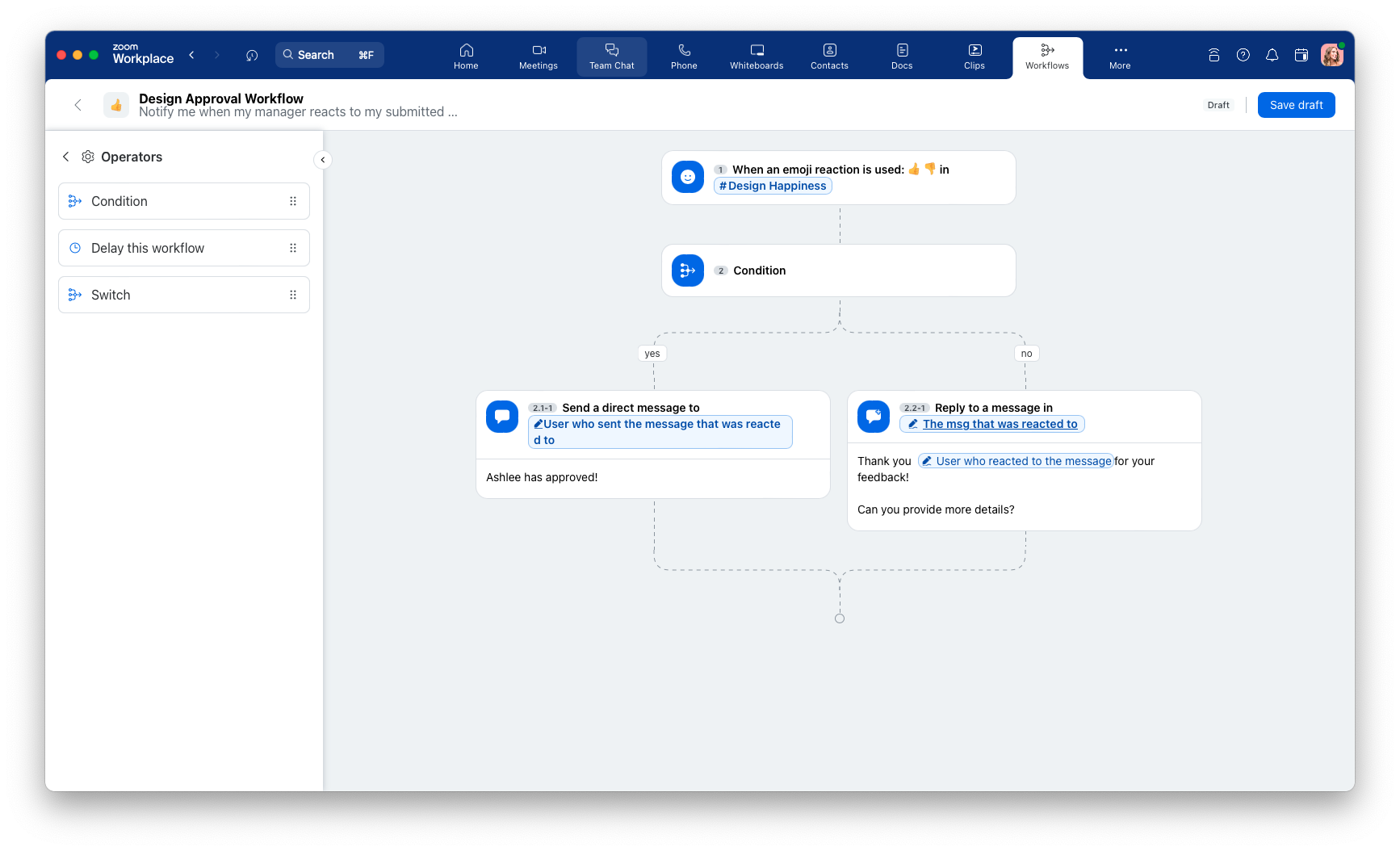Zoom introduces Workflow Automation, a no-code workflow builder to boost workplace efficiency

Today, Zoom launched the new Workflow Automation in beta, allowing users to increase efficiency and reduce time spent on routine tasks. Workflow Automation helps users build complex workflows across Zoom Workplace and third-party applications so they can spend time on more meaningful work and collaborate more seamlessly with colleagues. It automates workflows within Zoom Team Chat, Zoom’s AI-powered chat solution, with more product capabilities coming soon.
Maximizing Efficiency
In today’s fast-paced work environment, efficiency is paramount, and Zoom Workplace helps users make the most of their workdays with innovative features. Users can leverage Workflow Automation to set up automated messages in Team Chat introducing new members to a channel, create recurring reminders for project status updates, simplify the process of submitting time off requests, and prompt users with questionnaires to collect feedback inside a chat channel. These capabilities will help to empower users to save time and do their best work. Users don’t need technical skills to build workflows; all they have to do is utilize the drag-and-drop functionality, with no coding required.
 “We built Workflow Automation to be easy for teams of all sizes and abilities to use. We’re launching Workflow Automation with Team Chat first because it’s an opportunity to strengthen collaboration with team members and get work done asynchronously,” said Wei Li, head of Zoom Team Chat at Zoom. “Workflow Automation helps teams by taking the guesswork out of setting up workflows and helps cut down on tedious and repetitive tasks.”
“We built Workflow Automation to be easy for teams of all sizes and abilities to use. We’re launching Workflow Automation with Team Chat first because it’s an opportunity to strengthen collaboration with team members and get work done asynchronously,” said Wei Li, head of Zoom Team Chat at Zoom. “Workflow Automation helps teams by taking the guesswork out of setting up workflows and helps cut down on tedious and repetitive tasks.”
How to use Workflow Automation
Building workflows into a platform can be complex. With Zoom Workflow Automation, a user can select from pre-built templates or build their own workflow to automate everyday tasks.
- Zoom Workflow Automation enables users to automate tasks to focus more on strategic decision-making and boost overall productivity. Examples of these tasks include scheduling recurring project updates and reminding the team to post status updates to a Team Chat channel or efficiently gathering and collecting input, whether it be for a feature request, user feedback, or incident reports.
- To simplify workstreams, users can set up sequential, conditional, or switch-based workflows that automate multiple paths and outcomes. For example, a user could establish a workflow in Team Chat where incoming feedback is automatically categorized based on keywords. If the keyword mentioned is related to “billing,” it can route to the finance channel or if it is related to “technical issues,” alert the IT support channel. Automation helps to optimize response times and ensure efficient handling of diverse inquiries within Team Chat.
- To enable teams of various skill levels to automate workflows, Zoom built Workflow Automation as a user-friendly, no-code experience that makes it easy for anyone to build complex workflows. Pre-built templates are included for common tasks, such as onboarding new members to a channel or simplifying approval processes like time off requests. Zoom will continue to introduce new templates over time to support a wide range of business needs.
During the beta period, Workflow Automation is available to paid Zoom users* at no additional cost. At general availability, paid plans will include unlimited standard workflow runs and allotments of premium workflow runs, with specific per-run charges for allotment overruns.
Visit the Zoom blog for more ways to save time with Workflow Automation. To find out more about Zoom Workflow Automation, visit Zoom’s Website and the support page.
*Note: May not be available for all regions and industry verticals during the beta period.

Zoom Media Kit
Explore our Media Kit for essential information and resources to help you out.
Learn more



